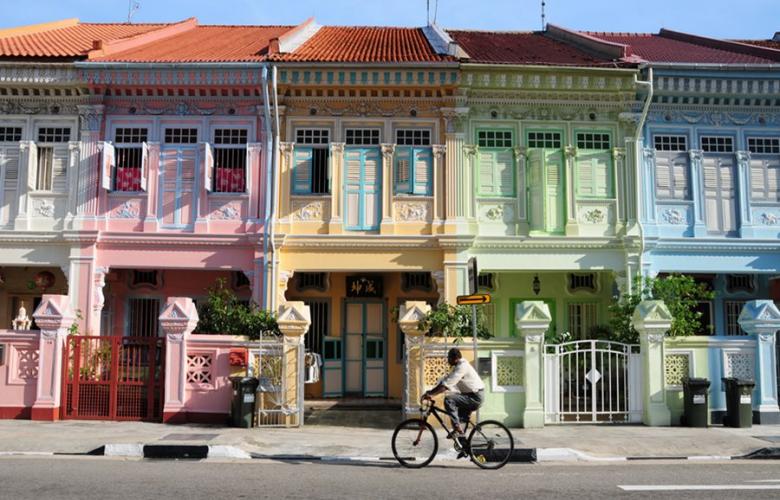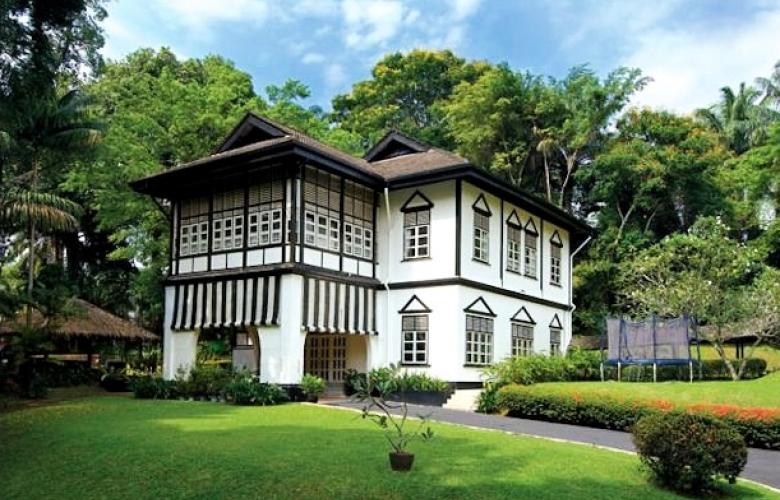When I moved to Singapore a number of years ago, my first task was to find a home for our family of five. I spent days in the back of a minivan being whisked from cluster house, to condominium, to conservation home, and terrace house. We even visited a good-class bungalow I’m pleased to report.
My head was swimming. How did a good-class bungalow differ from a run-of-the-mill bungalow? Why would my family want to live in a shophouse? How would I explain to my friends back home in Australia I was living in a condo?
What did it all mean?
In this article I’ll explain the different types of property available in Singapore, and provide some background about how Singapore was transformed in less than 50 years from a tiny island of slums into one of the world’s most successful real estate markets.
There are two factors that differentiate Singapore real estate from the rest of the world’s. One, Singapore has one of the highest rates of home ownership in the world. More than 90 per cent of Singaporeans own their own home. And two, more than 80 per cent of Singaporeans live in public housing.
Public housing is the very cornerstone of the nation of Singapore. Not available to foreigners, Singapore’s subsidized public housing is intended to create high rates of home ownership, to foster a sense of belonging, and to create pride in the nation. It has worked. Singaporeans are prosperous and united, and they are immensely proud of their country.
All levels of society live in public housing. There are older, lower cost Housing Development Board developments, and there are new, quite luxurious projects — with the price tag to match.
The widely respected HDB manages public housing in Singapore. Begun in 1960 by Lee Kuan Yew’s People’s Action Party party, the HDB built 54,000 apartments in its first decade of operation. Today, the HDB has built more than 1 million flats on the tiny island nation.
The Home Ownership scheme was introduced in 1964, and later, retirement savings could be used to purchase a home, measures that have greatly contributed to Singapore’s high rate of home ownership.
HDB apartment buildings are generally brutalist style, built from concrete on a concrete slab. Apartments stem from long corridors and the blocks are sometimes very large. Many blocks contain a ‘void deck’ on the ground level, where residents can congregate, children can play, and often a small shop sells basic items.
HDB flats are located in satellite towns, with their own schools, supermarkets, doctors, hawker markets, and sport and rec facilities. The HDB balances the ownership mix of each block to approximate the racial make up of Singapore.
HDB developments cater for all family sizes and budgets. Studio apartments, two-room flats, three-room flats, four-room flats, five-room flats, and 3 Gen flats are all available under Singapore’s public housing program. Executive flats have extra space, and Design, Build and Sell flats, a relatively new innovation, are intended mainly for investors.
Another recent innovation is the public-private hybrid apartment. Called executive condominiums, these public housing units become private housing after five years.
Private housing is also available in Singapore, and is available to foreigners and wealthy Singaporeans to buy and rent.
There are two types of private property in Singapore: condominiums or apartments; and landed property.
Condominiums are large private apartments complexes, usually with a range of recreational facilities, like pools, gyms, tennis courts, and function rooms.
Apartments in Singapore are generally smaller blocks. Though they can be similar to HDB apartments, they are more expensive.
Walk ups are pretty much as they are described: small blocks of low-rise apartments without a lift.
Landed property is Singapore’s real estate peak. If you own landed property in Singapore, you have reached the top rungs of society’s ladder.
Terrace houses are rows of similar dwellings joined on both sides.
Conservations houses are historically significant homes that have been conserved in keeping with their heritage.
The majority of conservation houses and terrace houses are also known as shophouses. These rows of houses reflect Singapore’s rich cultural diversity, and contain a mix of Chinese, Malay, and European architecture. They can be quite ornate. They give some neighbourhoods, such as Katong, Little India, Emerald Hill and Chinatown, a distinctive look that is uniquely Singaporean.
Bungalows are for the almost top-tier of Singapore’s well-to-do. They are freestanding homes on a minimum 400sqm block of land. There are various classes of bungalows: class 1 is for block 400-450sqm, class 2 for 550-700sqm, class 3 is for 700-1,000sqm, and a class 4 bungalow is a freestanding home on a block size 1,000-1,4000sqm.
A freestanding home on a block of more than 1,4000sqm — remember Singapore is a tiny island with a population of more than 5 million people — is a superbly titled good class bungalow.
What could possibly be more prestigious than a good class bungalow you might ask?
The very pinnacle of Singapore real estate — and my personal (out of reach) favourite — is the famous black and white. These gracious, colonial-era homes are government owned, heritage protected, and are rented, usually to foreigners, through an auction process. They occupy huge blocks of land, and are often nestled in a jungle setting. They are usually two stories, with the living areas on the top floor to make the most of tropical breezes.
Foreigners are able to buy certain types of property in Singapore, but must comply with many rules and regulations. They are not able to buy historically significant property or HDB properties, and they must obtain permission to buy restricted properties, such as vacant land or landed property. They are allowed to buy certain condominium apartments.
As part of a series of recent measures to cool the overheated real estate market, the government has increased the stamp duty on property for foreigners to 15 per cent. Considering recent falls in prices, and weaker global economic conditions, there have been calls to lower the rate.
Caroline Egan
Similar to this:
Singapore property: time to ease off the brakes?
New frontiers in emerging property markets










